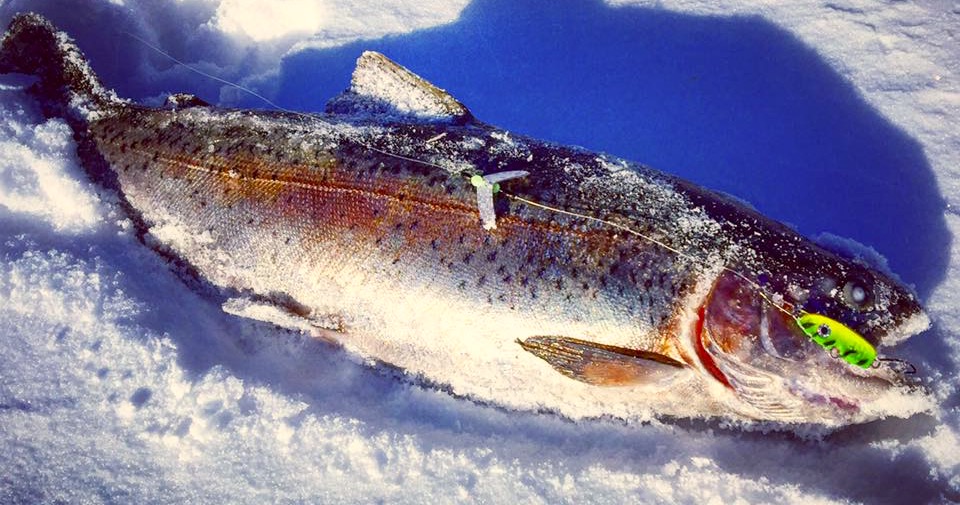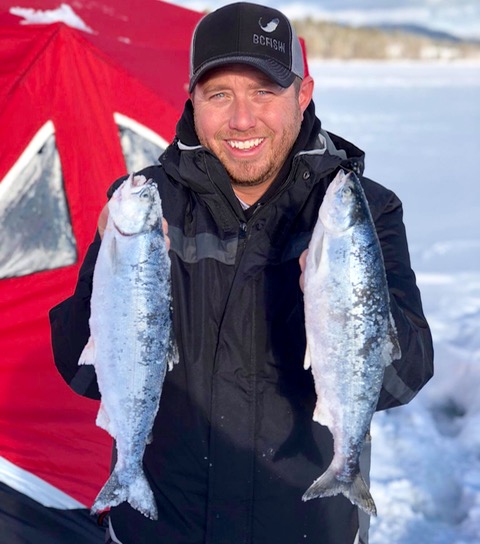Hardwater hacks
Trout tips from expert ice angler Danny Coyne
Advertisement
Tip #1: Stir things up
One of the most productive areas to ice fish for brook, brown and rainbow trout is a weedline adjacent to a sharp drop-off or breakline. With the lush vegetation packed with minnows, freshwater shrimp and other insects, this jungle-like edge is a great ambush spot for opportunistic trout. But it comes with snags—literally—which Danny Coyne (above) of www.bcfishn.com, an instructional website for western anglers, knows all too well.
Advertisement
“One day, I was fishing along a weedline and an underwater current kept pushing my jig into the vegetation,” he says. “I aggressively snapped it free and reeled up a green salad attached to the hook.” Coyne says he grew frustrated, thinking he’d have to drill new holes further way from the weeds, but he kept at it and soon hooked a trout. After that, he couldn’t keep the fish off his lure.
[easy-tweet tweet=”Expert angler Danny Coyne reveals his secret tricks for catching brook, brown and rainbow trout through the ice” user=”OutdoorCanada” hashtags=”icefishing, icefishingFriday, winterfun, troutfishing”]
“When I looked down the hole,” Coyne says, “all I could see were trout swarming around in the cloud that I had stirred up.” He quickly realized that ripping up the weeds had attracted the trout by mimicking the actions of feeding fish. It had also dislodged the small insects that were clinging to the stalks. “Ever since I stumbled on to this trick, it has become my go-to tactic for trout,” he says. “I start every day now plunking a heavy jig into the weeds and ripping them up. Then I drop down a baited jig and wait for the fish to zone in on it. It doesn’t take long before I’m catching fish.”
Advertisement

Tip #2: Add a flasher
For years, savvy ice anglers like Danny Coyne have tied a small, hook-free spoon above their ice jig as a flasher, but the added weight often leads to missing subtle strikes. Coyne solved that problem by using the same ultralight Smile Blades (above), made by Mack’s Lures, that he ties on during the open-water season. And the way he attaches them is ingenious. He puts a rubber bobber stop on his line at the desired length above the lure, followed by a small glow bead, the Smile Blade, then another glow bead and a second bobber stop. Not only does this fix the twirling blade into position, it makes experimenting with varying lengths above the lure as easy as sliding the rubber stops up or down the line. It’s the perfect presentation for trout, kokanee salmon, panfish and walleye.
Every Friday this winter we’ll be sharing Outdoor Canada’s top ice fishing tips for 2020. Check back regularly to learn about the latest tackle, tips and techniques for icing more walleye, perch, northern pike, lake trout, crappies and whitefish. And you can see all of this year’s ice-fishing secrets at www.outdoorcanada.ca/2020icefishing.
Advertisement


